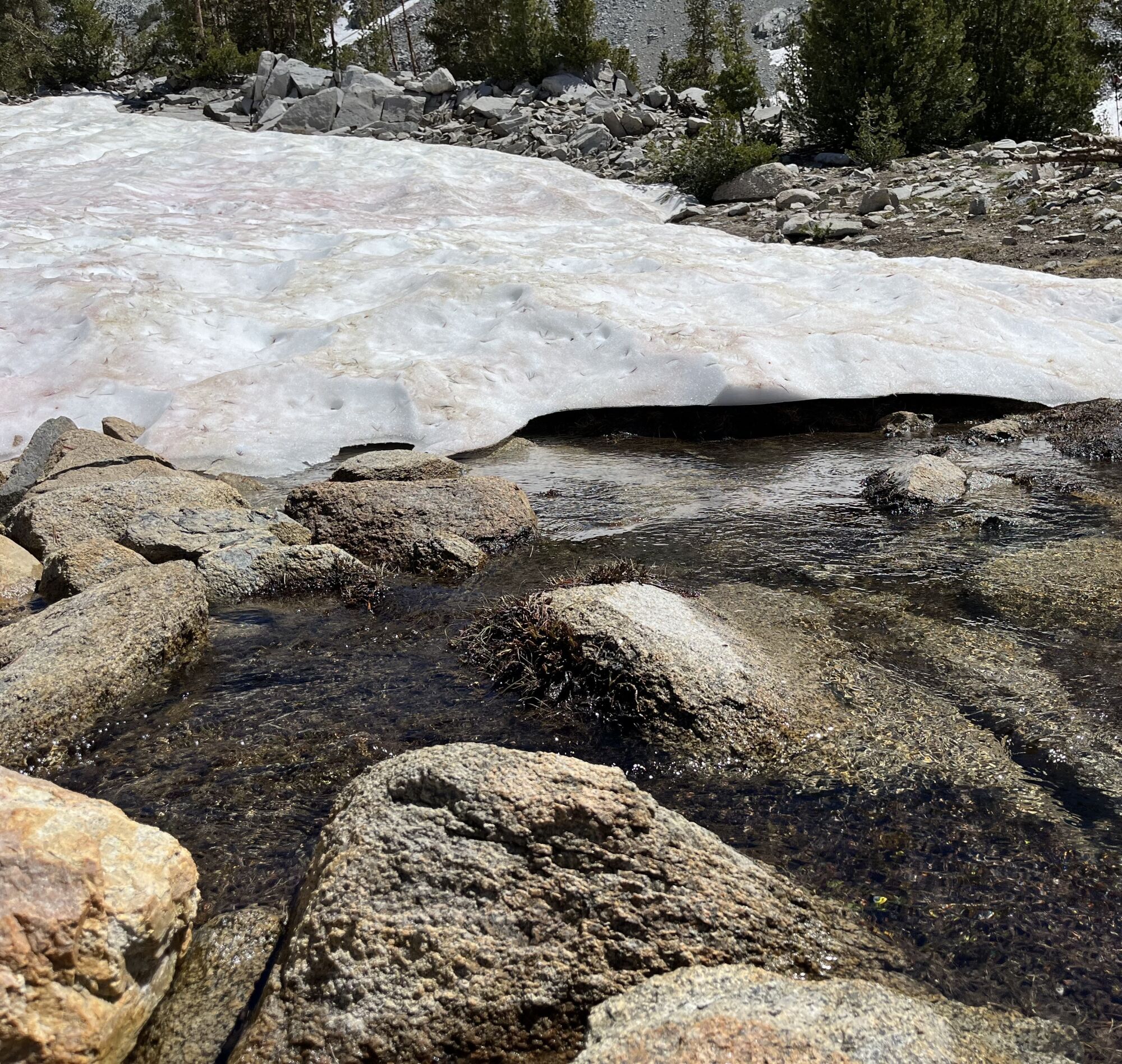In a typical year, California mountains are largely snow-free at this stage in the summer, with some exceptions at higher elevations. This, however, has not been a typical year. In the last couple of weeks of July, large swaths of the Sierra continued to be covered in snow, making for tricky and in some cases treacherous hiking conditions.
California’s snowpack reached record-high levels this year — 40 million acre-feet at its peak in April, which, melted, would be enough to fill a third of Lake Tahoe. The persisting snow cover has to do with an unusually wet winter and temperatures that remained low well into the spring. Direct sunlight is also usually a driving factor in accelerating snowmelt, but many parts of the state saw a relatively cloudy spring.
On July 21, the snowpack in both the South and Central Sierra regions was a staggering 1,000% of the average for that date. Snow cover at high elevations has persisted far longer compared with last year.
For people recreating in the backcountry, the persisting snow can make for some potentially dangerous conditions not usually seen this far into July. Over the next few weeks, hikers may continue to encounter large snow fields as well as snow bridges, which are masses of snow that form across — and sometimes conceal — hazards underneath, such as flowing water, crevasses and other openings in the ground.
Though it’s rare, late-season wet slab avalanches can also occur, according to Andrew Schwartz, lead scientist at the UC Berkeley Central Sierra Snow Laboratory. This can happen when a layer of snow, or a slab, gets wet and very heavy. The flow of water from the snowmelt can ultimately cause the slab to slide downhill. These avalanches are not associated with the big plumes of snow typically seen when avalanches occur in the winter, and have the potential to partly or completely bury a person. A hiker died in such an avalanche on Split Mountain in Inyo County on July 2.

If hikers visit the Sierra today, they may encounter snow bridges, which are masses of snow that could conceal hazards such as flowing water, crevasses and other openings in the ground.
(Abhinanda Bhattacharyya / Los Angeles Times)
Rivers and streams from snowmelt have also been flowing faster and higher than average this year, though that runoff peaked around June 1 and has been on a downswing since, Schwartz said. Still, for people venturing into the mountains, some rivers and streams may continue to pose dangers for several weeks to come.
On July 3, Mono County search-and-rescue volunteers recovered the body of a swimmer in a waterway below Grant Lake in the Eastern Sierra. This has been one among a few swift-water accidents across the state this year.
With temperatures rising, two things will happen, said Rob Patterson, president of the Mono County Sheriff’s Office’s search-and-rescue team.
“It makes people want to get in the water, and it makes the snow melt faster,” he said. “So I want to caution people to please be very, very, very careful around water, especially anything that leads to a stream or river. I would just not get in there right now.”
The all-volunteer search-and-rescue team is dispatched by the county sheriff and typically conducts about 45 missions each year. Seventy-five percent of those missions normally occur in the summer months, Patterson said. This year, he has been pleasantly surprised that despite the increased dangers in the mountains from the record-setting snowpack, he has not yet observed any uptick in calls for help. People seem to have done their due diligence about conditions, heeded warnings and simply recreated in the backcountry less frequently as conditions slowly improved.
“There was a lot of good decision-making going on” on whether or not to go in the backcountry, he said.
Patterson encouraged people recreating in the mountains this year to be prepared with gear for traversing snow and ice, such as ice axes, crampons and microspikes, and devices for calling for help in remote locations, such as satellite messengers. On the flip side, as temperatures rise over the next few weeks, hikers may also need to prepare for another type of extreme weather.
Stay connected with us on social media platform for instant update click here to join our Twitter, & Facebook
We are now on Telegram. Click here to join our channel (@TechiUpdate) and stay updated with the latest Technology headlines.
For all the latest Art-Culture News Click Here
